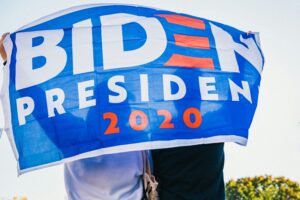As global trade becomes increasingly intertwined with political agendas, tariffs are emerging as a central tool of negotiation and leverage. The incoming administration of President Trump signaled a paradigm shift in how the U.S. engages with its trading partners, favoring tariffs as a go-to mechanism for addressing trade imbalances, protecting domestic industries, and exerting geopolitical pressure. This reliance on tariffs introduces a new era of trade policy defined by high levels of nuance and low levels of uniformity.
Unlike regulations, which, while burdensome, tend to apply consistently across sectors, tariffs are far more variable and disruptive. They fluctuate based on industry, commodity type, phase-in timelines, and country-specific considerations. This lack of uniformity creates uncertainty, particularly for businesses operating within global supply chains. Tariffs can lead to unpredictable costs, distort trade flows, and force companies to make costly adjustments to sourcing and production strategies. Little of which will result in creating jobs in the U.S.
For investors, this growing complexity means that broad macroeconomic investment strategies will no longer suffice. Universal themes cannot capture the messy, discordant reality of tariff-driven trade policies. Instead, understanding tariffs requires a deep dive into their specific applications and effects, from the industries they support domestically to the sectors left vulnerable to retaliatory measures abroad.
This research aims to shed light on the implications of tariff policies for investment strategies, emphasizing the need to pivot from broad, macroeconomic themes to more specialized and contrarian approaches. With global trade poised to experience continued turbulence over the next two years, understanding the nuances of tariffs will be more critical than ever for navigating policy and negotiation constraints effectively.
In this new landscape, tariffs are not just a fiscal tool—they are a disruptive force shaping the future of global commerce. In this blog series, we will explore, how the next round of Tariffs will affect industries, supply chains, and investment strategies, providing a roadmap for managing uncertainty in an increasingly fragmented trade environment.
The First Round of Trump Tariffs: 2016–2020
During the Trump administration, tariffs were introduced primarily under Section 301 of the Trade Act of 1974. These measures targeted $350 billion worth of Chinese imports by 2019, aiming to address trade imbalances, intellectual property theft, and forced technology transfers. However, these actions had mixed outcomes for the U.S. economy.
Economic Impacts
- Manufacturing and Materials: U.S. steel and aluminum producers initially benefited from tariffs as domestic prices increased. However, industries relying on these materials, including automotive and construction, faced higher production costs (Bown, 2020).
- Agriculture: Retaliatory tariffs from China and other countries deeply affected U.S. farmers, particularly soybean exporters. According to the USDA, U.S. soybean exports to China dropped by over 50% from 2018 to 2019.
- Consumer Goods: American consumers bore the brunt of higher prices for imported goods like electronics and appliances. This diminished purchasing power and raised inflationary concerns (Bown, 2020).
The Phase One Trade Deal: A Study of Policy Limitations
The U.S.-China Phase One Trade Deal, signed in January 2020, was heralded as a major breakthrough in the escalating trade war between the two nations. Its primary goals were to reduce trade tensions, address the trade imbalances that had been a cornerstone of the Trump administration’s policy narrative, and provide relief to U.S. industries heavily affected by retaliatory tariffs, particularly agriculture. The agreement committed China to purchase $200 billion in U.S. goods and services over a two-year period, covering products across key sectors, including agriculture, manufacturing, energy, and services.
However, the deal’s outcomes fell significantly short of expectations. By the end of the two-year period, China had fulfilled only 57% of its purchase commitments (Bown, 2021). This failure was especially pronounced in agricultural purchases, a focal point of the deal and a politically significant industry for the U.S. administration.
Why the Deal Fell Short
Unrealistic Targets
The $200 billion target was ambitious to the point of being unattainable, even under optimal economic conditions. Numerous factors, including market demand, global economic conditions, and logistical considerations influence trade between nations. The deal’s targets did not sufficiently account for these complexities nor the economic disruptions caused by the COVID-19 pandemic, which significantly reduced global trade volumes during this period.
Structural Limitations of Bilateral Agreements
Bilateral trade agreements like the Phase One Deal are inherently constrained in their ability to address broader, systemic trade issues. For example:
- Non-Tariff Barriers: The deal did little to address structural issues such as subsidies for Chinese state-owned enterprises or non-tariff barriers to market access, which were key grievances of the U.S. trade policy.
- Global Supply Chains: The agreement focused narrowly on U.S.-China trade flows, ignoring the broader dynamics of global supply chains and the interdependencies of other trading partners.
China’s Domestic Priorities
China’s compliance with the deal was also influenced by its domestic priorities. While it increased purchases of U.S. soybeans and pork, key agricultural commodities, it sought to diversify its supply chains by expanding imports from other countries such as Brazil and Argentina. This diversification reduced its reliance on U.S. goods and insulated its economy from future trade disputes.
Pandemic Disruptions
The onset of the COVID-19 pandemic in early 2020 had a profound impact on global trade. Supply chain disruptions, declining demand, and logistical challenges made it even more difficult for China to meet its purchasing commitments.
Implications for Trade Policy and Investment
The shortcomings of the Phase One Trade Deal underscore the limitations of using tariffs and bilateral trade agreements as a strategy for managing complex economic relationships. Instead of resolving underlying issues, the agreement exposed the fragility of such approaches and their susceptibility to external disruptions.
For investors, the deal highlighted the importance of considering geopolitical risk and policy uncertainty when evaluating opportunities in tariff-sensitive industries, such as agriculture and manufacturing. It also demonstrated the need for diversified investment strategies that account for potential supply chain realignments and shifts in global trade patterns.
Ultimately, the Phase One Trade Deal serves as a cautionary tale about the challenges of using trade policy as a tool for economic leverage. While it provided temporary relief to some U.S. industries, its long-term effectiveness was undermined by unrealistic expectations and the structural complexities of international trade. The lessons from this agreement will likely inform future trade negotiations, emphasizing the need for more holistic, multilateral approaches to resolving trade disputes.
Continued on The Rising Importance of Tariffs in Global Trade: Part 2
References
- Bown, Chad P. (2021). The Anatomy of a Flop: Why Trump’s US-China Phase One Trade Deal Fell Short. Peterson Institute for International Economics.
- Morgan, S., Arita, S., Beckman, J., Ahsan, S., Russell, D., Jarrell, P., & Kenner, B. (2022). The Economic Impacts of Retaliatory Tariffs on U.S. Agriculture. U.S. Department of Agriculture, Economic Research Service.
- Office of the United States Trade Representative (USTR). (2020). Section 301 Investigations and Tariffs.
- World Trade Organization (WTO). (2021). World Trade Report.



